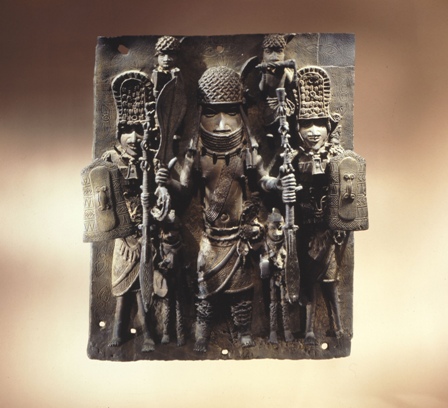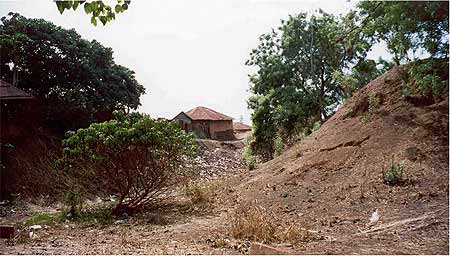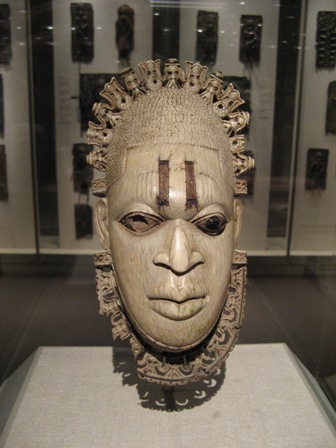Ketu
In “The Fortuitous Meeting”, Oludara mentions that he “hails from the kingdom of Ketu”.
Ketu was the westernmost of the seven historical Yoruba kingdoms. Yoruba tradition says that these kingdoms were formed by the descendents of the Orisha Oduduwa when they moved west from Ilé-Ife. Oduduwa is credited with creating the Earth, at the command of the supreme deity Olorun.
Sopasan is credited as the first oba (king) in the line of Ketu, even though the city did not exist during his lifetime. Instead, it was he who led forth the people from Ilé-Ife who would eventually inhabit Ketu. Only the seventh king, Ede, would finally found the city.
The town was settled on a plateau with so few sources of water that a saying developed among the Yoruba: “Water becomes honey in Ketu”. To compensate, inhabitants gathered rainwater in cisterns and dry wells. This lack of water limited the size of the settlement. However, the plateau provided excellent protection–Ketu was conquered only once in all its long history.
Sixteenth-century brass plaque, Benin
(Source: Penn Museum)
The town was built around a sacred Iroko tree. According to custom, a human sacrifice was required to protect the town. A hunchback from a nearby Ewe community was sacrificed at the entrance to the city, which is said have provided the town’s name. The question “Who straightens the hump?” is “Ke ‘tu ike?” in Yoruba. The answer: no one can straighten the hump, so no one can destroy the town. The fourteenth oba, Sa, built a massive gate at the same spot. The gate, crafted from Iroko wood, contained two wooden doors, one outside and one inside. It was given the name Idena for “sentry”.
From the gate stretched an immense clay wall which surrounded the city. Outside the wall lay the ditches from which its clay had been dug, providing further protection. As a final defense, a row of thorn bushes was planted outside the ditch.
Remains of Ketou ditch
(Image: Centre of World Archaeology)
The Oba of Ketu takes the title Alaketu: “the one who owns Ketu”. From the twenty-fifth Alaketu on, the position of oba has rotated between five different royal families: Alapini, Magbo, Aro, Mesa, and Mefu. I will discuss the Oba in greater depth in another post.
Ivory belt mask – Sixteenth century Benin
(Image: www.metmuseum.org)
To the west, Ketu shared a border with Fon-speaking peoples who would eventually found the kingdom of Dahomey and become their greatest rivals. After many wars and much history, Ketu and their Fon neighbors both fell under French domination and were eventually united in the modern-day nation of Benin, while most other Yoruba kingdoms fell under British control and eventually became part of Nigeria.
Ketu still exists today, under the French-modified name of Ketou. It is a city with a long and rich history, tracing its kings and traditions back over six-hundred years. Many travelers visit Ketou and speak with the Alaketu himself to learn much of this magnificent history.






